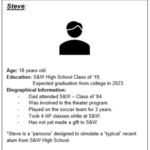A full day solely dedicated to digital direct marketing? COUNT US IN!
In early June, we attended the Direct Marketing Association of Washington’s (DMAW) annual Digital Day. The conference was teeming with industry leaders and insights into current trends in the nonprofit digital advocacy and fundraising field. Here are our key takeaways from the day’s sessions and presentations:
The Future is Automation
Digital automation is taking hold–and it can make your job easier. As this technology—triggered welcome series, auto renew buttons, cart abandonment lightboxes, triggered upgrade lightboxes, dynamic ads—becomes more affordable and accessible, it should become part of your fundraising toolbox.
Here’s why: a recent case study conducted by M+R (a national consultancy in online marketing, PR and social media for nonprofits) found that nearly 20% of sustainer level donors who lapsed, but received a triggered email were re-captured, and 56% of current members chose to “auto-renew” when that opportunity was offered.
At Schultz & Williams (S&W), we’ve seen similar results with our clients who use this technology. If your organization isn’t using automated features to maximize and increase giving, it’s time to take your digital automation to the next level.
Digital Happens Fast; Stay Relevant
Let’s keep this quick: rapid response works. To keep up with breaking news, you must remain adaptable since you never know when a relevant issue or mission-related topic will make headlines, giving you a window to drum up support.
You can’t predict the future, but you can be ready for it. Have a list of stakeholders prepared to expedite approvals; create a template for social media ads & emails that can be quickly adapted to a current event; and draft a list of donor-centric talking points for your key issues. You should aim to send your email within eight hours of breaking news and deploy social media ads within one to three so that proper preparation will go a long way in the heat of the moment.
And don’t forget to follow up with a cultivation email a few days later!
Speak Your Donor’s Language
“I’m one ER visit away from bankruptcy.” That’s one of the responses Working America heard over the course of their thousands of interviews with working-class people—and just like that, they had a key message. Your supporters, members, mid-level donors and prospects want to talk to you, but you should always ask them what they’re experiencing to understand why your work matters to them. Survey your base about the issues they care about, and you’ll learn a lot about how to reach them.
More broadly, we need to start meeting people where they are, especially younger generations. Larger nonprofits have seen success using engagement campaigns on mobile devices through SMS (texting) or “friendraising,” cultivating likes on their Facebook pages. These campaigns don’t always reap dollars right away, but they can build a community (and list) of future supporters!
Make Your Copy Shine
In an age of skimming and scrolling, email content can’t be boilerplate. It needs to draw you in, tell a story; move you, call you to act, and show that there’s hope for change. Here are some great tips from marketing firm Catena Connects and the United Nations High Commissioner for Refugees (UNHCR) that can work for any organization:
- Get to the point, and fast. Within the first few paragraphs, you must articulate the need, show how the donor can affect change, include a call-to-action and a link to donate.
- No, seriously; get to the point. When you’ve completed your draft, re-read the copy and ask yourself: did I bury the lede? How much more quickly can you bring your issue to the forefront? Another great tip: when you think you’re done, cut seven words. You’d be surprised how much cleaner your message will be.
- Your donor is Batman; you are Robin. People give for a lot of different reasons, but mostly, they want to feel good about themselves. Make your donor the hero—not your organization—and show them how they are making the world a better place.
- Talk it out. Direct marketing content is not a piece of formal writing. It’s a conversation. When you’ve completed your piece, read it aloud and listen for stiffness and stuffiness. Or, when you’re drafting, pretend you’re writing to a friend. Donors will feel the warmth in your tone–and that makes a big difference.
At S&W, we’re always looking for the most recent digital trends to help take our clients’ fundraising strategies to the next level. If you’re looking for more great ideas and insights, give us a call–we’re happy to share!






